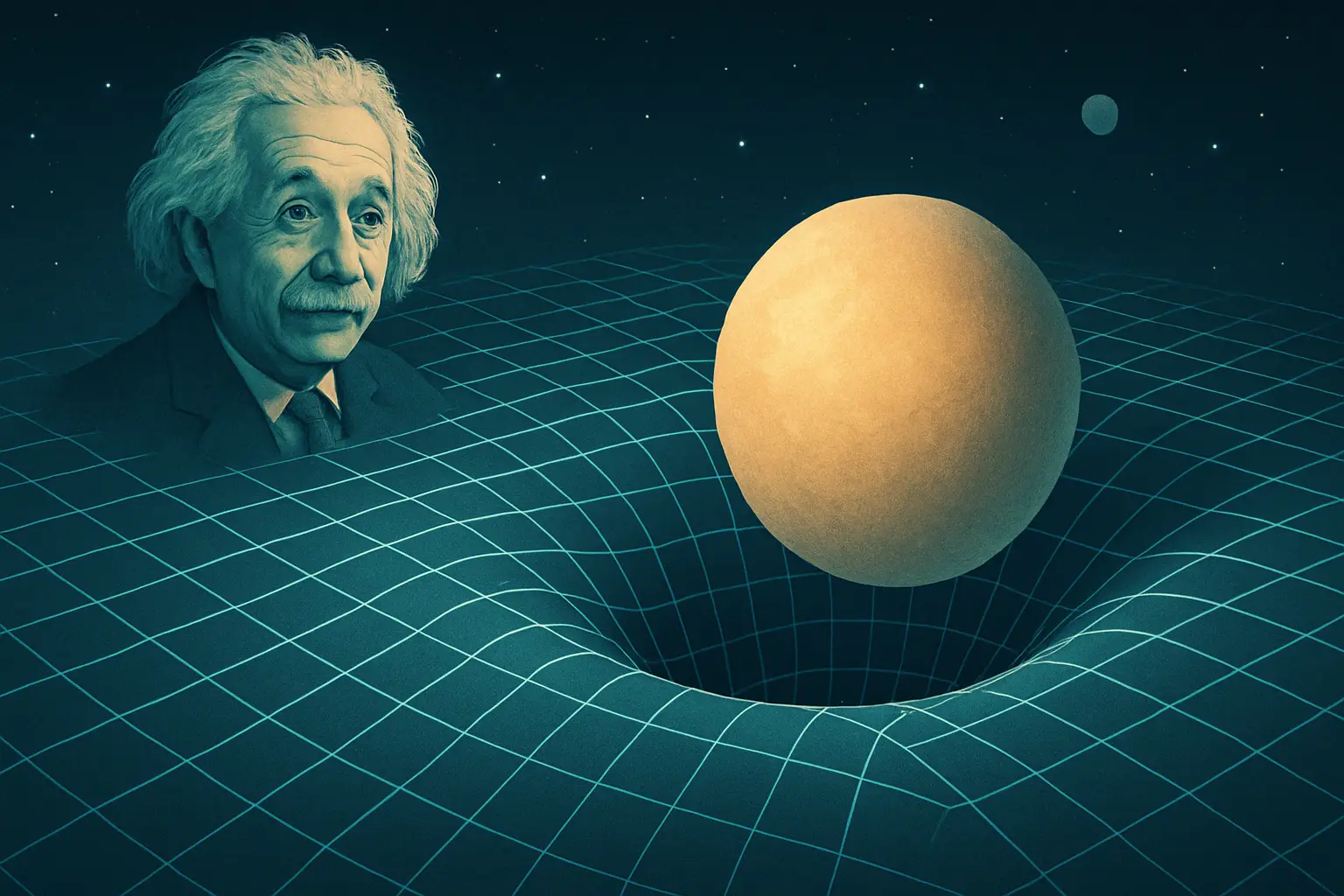Table of Contents
- Introduction
- The Limitations of Special Relativity
- Equivalence Principle
- From Newtonian Gravity to Geometry
- Spacetime Curvature
- Tensors and the Metric Tensor
- Einstein’s Field Equations
- Geodesics and Motion in Curved Spacetime
- Gravitational Time Dilation
- Classic Tests of General Relativity
- Gravitational Waves
- Black Holes and Event Horizons
- Cosmological Implications
- Challenges and Quantum Gravity
- Conclusion
1. Introduction
General relativity (GR) is Einstein’s extension of special relativity that incorporates gravity. Instead of viewing gravity as a force, GR describes it as a consequence of the curvature of spacetime caused by mass and energy.
This elegant theory revolutionized our understanding of the universe, leading to black holes, gravitational waves, and the expanding cosmos.
2. The Limitations of Special Relativity
Special relativity deals only with inertial frames — those not experiencing acceleration or gravity. It assumes spacetime is flat and doesn’t account for:
- Accelerating observers
- Gravitational fields
- Cosmological dynamics
To handle gravity, Einstein needed a general theory that worked in any frame.
3. Equivalence Principle
Einstein’s key insight: Gravitational and inertial mass are the same.
- In a small region, acceleration due to gravity is indistinguishable from acceleration in a rocket:
“There is no experiment that can distinguish between free fall and inertial motion.”
This is the Equivalence Principle, which implies that gravity can be interpreted as an effect of curved spacetime.
4. From Newtonian Gravity to Geometry
Newton described gravity as a force:
\[
F = G \frac{m_1 m_2}{r^2}
\]
But this implies instantaneous action at a distance.
Einstein proposed that mass and energy curve spacetime, and that objects move along geodesics — the straightest paths in that curved geometry.
5. Spacetime Curvature
Curvature is described using differential geometry. In flat spacetime:
\[
ds^2 = -c^2 dt^2 + dx^2 + dy^2 + dz^2
\]
In curved spacetime:
\[
ds^2 = g_{\mu\nu} dx^\mu dx^\nu
\]
Where \( g_{\mu\nu} \) is the metric tensor, encoding the shape of spacetime.
6. Tensors and the Metric Tensor
Tensors generalize vectors and scalars. The metric tensor:
- Defines distances and angles
- Allows raising and lowering indices
- Provides connection between coordinates and geometry
In general relativity, the central object is \( g_{\mu\nu} \), a symmetric 4×4 tensor.
7. Einstein’s Field Equations
Einstein’s field equations relate spacetime curvature to the energy-momentum of matter:
\[
R_{\mu\nu} – \frac{1}{2} R g_{\mu\nu} = \frac{8\pi G}{c^4} T_{\mu\nu}
\]
Where:
- \( R_{\mu\nu} \): Ricci curvature tensor
- \( R \): scalar curvature
- \( T_{\mu\nu} \): energy-momentum tensor
- \( g_{\mu\nu} \): metric tensor
This equation replaces Newton’s \( F = ma \) for gravitational systems.
8. Geodesics and Motion in Curved Spacetime
Freely falling particles follow geodesics, determined by:
\[
\frac{d^2 x^\mu}{d\tau^2} + \Gamma^\mu_{\alpha\beta} \frac{dx^\alpha}{d\tau} \frac{dx^\beta}{d\tau} = 0
\]
Where \( \Gamma^\mu_{\alpha\beta} \) are Christoffel symbols, derived from \( g_{\mu\nu} \).
This generalizes Newton’s laws to curved spacetime.
9. Gravitational Time Dilation
In a gravitational field, time passes more slowly:
\[
d\tau = \sqrt{1 – \frac{2GM}{rc^2}} dt
\]
This explains phenomena such as:
- GPS clock corrections
- Time slowing near black holes
- Redshift of light escaping gravity wells
10. Classic Tests of General Relativity
- Perihelion precession of Mercury
- Deflection of light by the Sun
- Gravitational redshift
- Time delay of signals (Shapiro effect)
All have been confirmed with remarkable precision.
11. Gravitational Waves
Ripples in spacetime produced by accelerating masses:
- Predicted by Einstein
- Travel at speed of light
- Detected by LIGO in 2015
They confirm GR’s dynamic nature of spacetime.
12. Black Holes and Event Horizons
Solutions to Einstein’s equations (e.g., Schwarzschild solution) reveal:
- Singularities: points of infinite curvature
- Event horizons: surfaces beyond which nothing escapes
Black holes are real, observed phenomena confirmed by gravitational waves and imaging.
13. Cosmological Implications
GR provides the foundation for cosmology:
- Expanding universe (Friedmann equations)
- Big Bang model
- Cosmic microwave background
- Dark energy via cosmological constant \( \Lambda \)
The universe’s fate is governed by Einstein’s equations.
14. Challenges and Quantum Gravity
GR is a classical theory — it breaks down at Planck scales.
We seek a quantum theory of gravity, potentially via:
- String theory
- Loop quantum gravity
- Emergent spacetime models
15. Conclusion
General Relativity is one of the greatest achievements in physics. By describing gravity not as a force but as the geometry of spacetime, it unites elegance with empirical success.
It explains black holes, cosmic expansion, and time dilation — and continues to guide our quest toward a deeper understanding of the universe.


